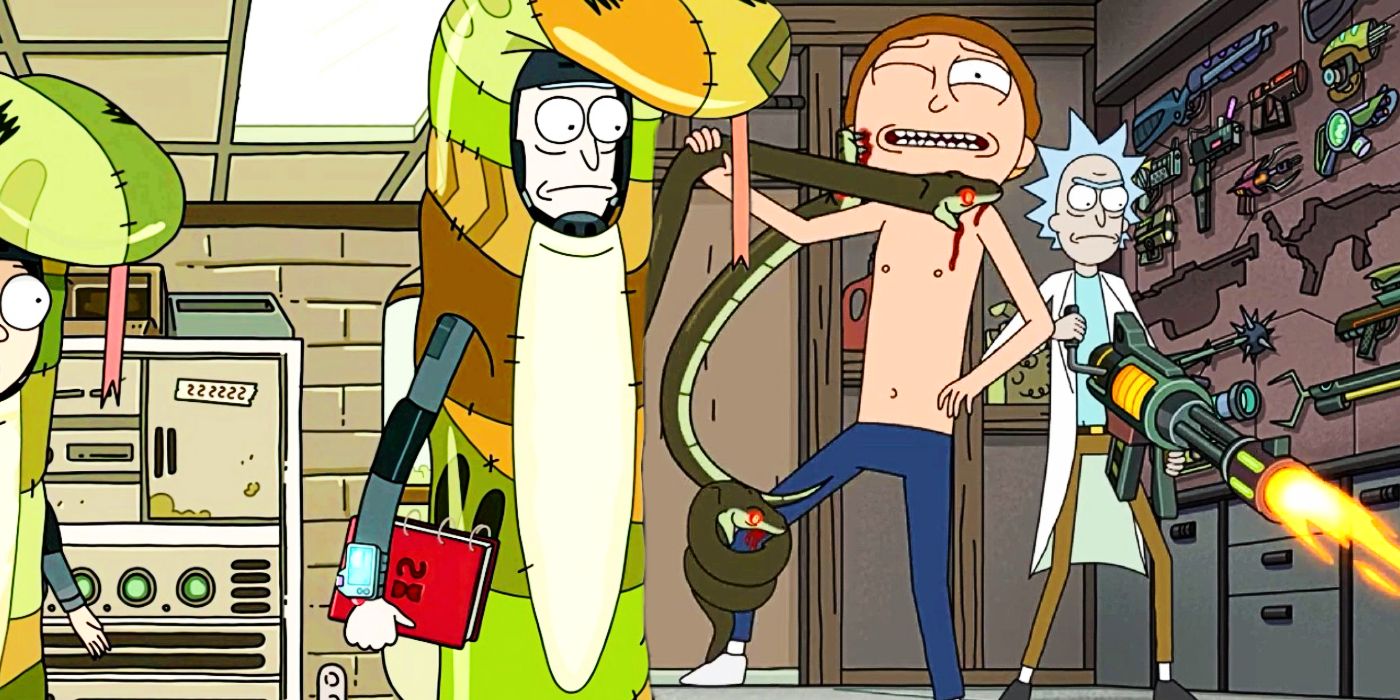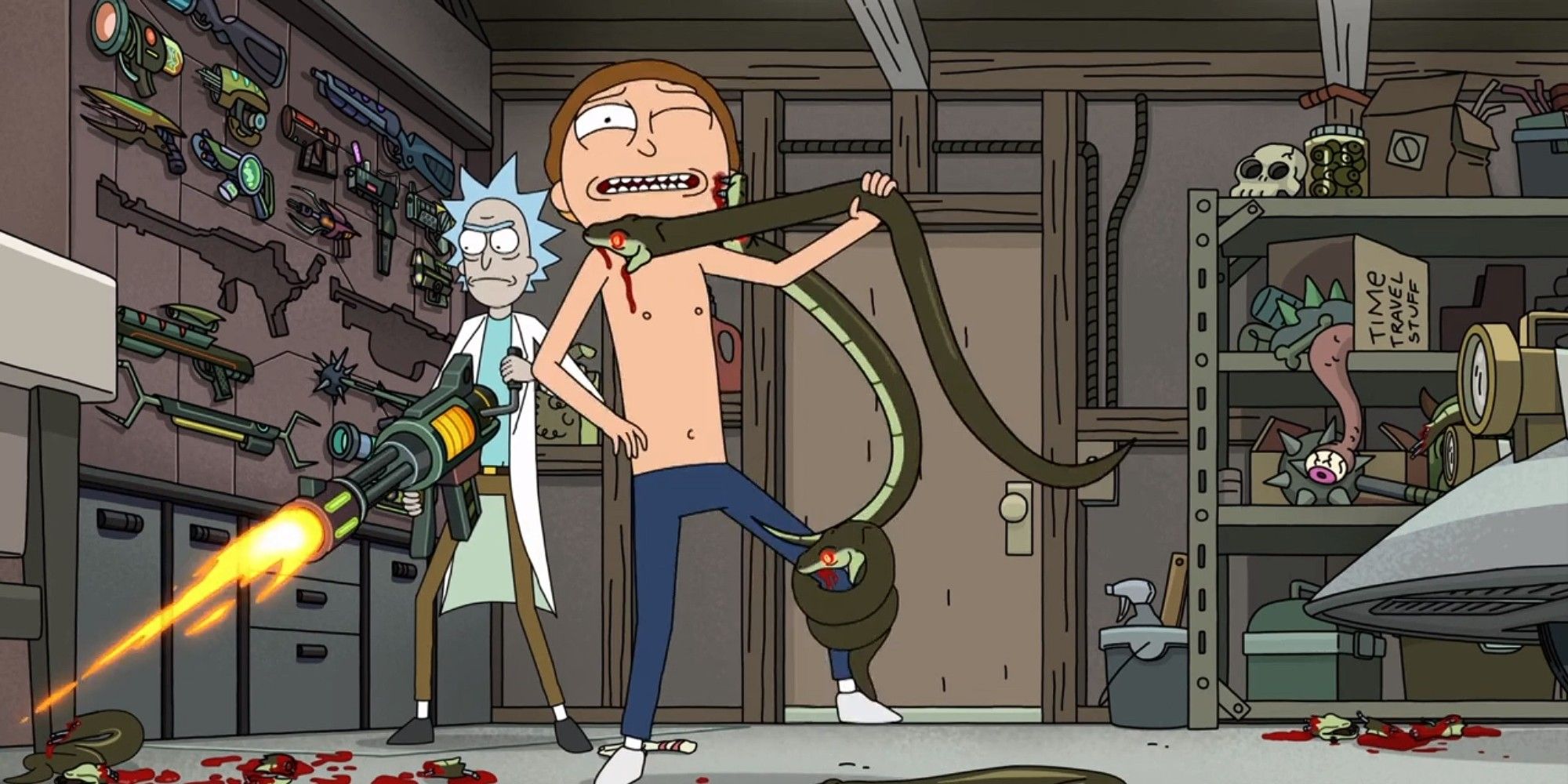Although the Rick & Morty creators promised that the Adult Swim hit would never focus on time travel, the series managed to find a perfect workaround for this rule. Rick & Morty has spoofed almost every facet of the sci-fi genre, with the show parodying everything from alien life forms to interdimensional travel. However, some subjects were too clichéd even for Rick & Morty to revitalize, with the show vowing never to take on tropes that were too tired to feel fresh.
For example, co-creators Justin Roiland and Dan Harmon said Rick & Morty would never feature time travel plots as they had been done to death already and every possible story centered around the subject had already been explored. However, Rick & Morty's Terminator-spoofing “Rattlestar Ricklactica” (season 4, episode 4) managed to address time travel while still poking fun at how tired the convention was. The episode’s plot combined a knotty time travel story with a parody of time travel clichés, meaning Rick & Morty managed to carefully skirt the show’s own rules.
Beginning with Morty accidentally killing a space snake, the plot of “Rattlestar Ricklactica” quickly spun out of control and became a messy, impossible-to-unknot pile-up that showed how overcomplicated the subject of time travel can become even in one brief twenty-minute episode. When subjected to rigorous interrogation, time travel plots are often contradictory, confusing messes, as evidenced by the Terminator sequel Genisys which Rick & Morty’s snake-centric story parodied. Thus, the Rick & Morty episode was able to technically provide a time travel story for the show while also simultaneously proving that Roiland and Harmon were right and the subject was too knotty, complex, and over-explored to be worth taking seriously.
Why Rick & Morty’s Time Travel Story Succeeded
From the beginning of the episode onwards, it is clear that “Rattlestar Ricklactica” is not one of the more serious Rick & Morty episodes that will have consequences for the show’s overarching narrative. The episode gleefully leans into its own silliness, which makes the impossibility of keeping up with the contradictory, self-defeating time travel gambits funny rather than frustrating. Some of Rick & Morty's most hated, seemingly silly plots have turned out to be important contributions to the show’s larger story arc, but “Rattlestar Ricklactica” succeeded precisely because the episode avoided this approach.
With viewers well aware that nothing which happened between the various snakes of these various realities would have a major impact on the main characters, viewers were free to enjoy the Rick & Morty episode without trying to keep track of its merging, collapsing mess of timelines. Even the goofy deus ex machina ending worked because nothing about the episode had been serious, so the fact that “Rattlestar Ricklactica” ended with such a silly, self-referential coda felt fitting rather than lazy. Thus, by writing a time travel story that didn’t follow its own logic and proved time travel stories were more work than they were worth, Rick & Morty managed to break its own rules without contradicting itself.


